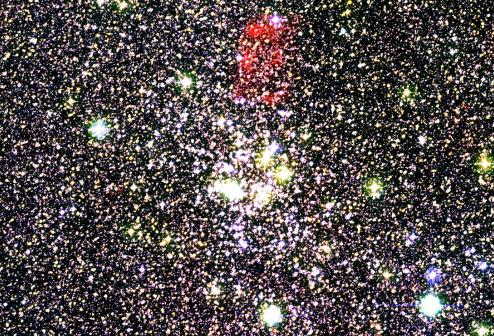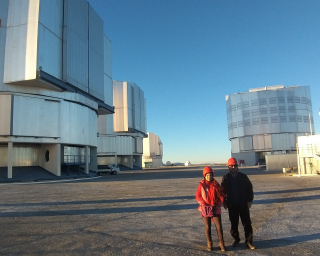研究故事
VP(R)'s Picks: Discovery of Largest Sun-like Star in Death Throes
上一頁
分享
相關連結
Professor Quentin Parker and PhD candidate Vasiliki Fragkou in the Department of Physics discovered the star, confirming astronomical theory and opening pathways to new insights about the universe.
 Professor Quentin Parker (right) and PhD student Vasiliki Fragkou
Professor Quentin Parker (right) and PhD student Vasiliki FragkouMassive stars die off after only a few million years and form powerful supernovae. But lower mass stars like our Sun go through a short phase in which they cast off their outer envelopes, called planetary nebulae, leaving behind a residual core that evolves to a so called “white dwarf” star. Planetary nebulae are like fossil records, revealing evidence of the timescales, physics and chemistry involved in the evolution of stars. Now, the largest-ever stellar progenitor of a planetary nebula has been detected by Professor Quentin Parker and his PhD student Vasiliki Fragkou, working in collaboration with the University of Manchester and the South African Astronomical Observatory.
Theory holds that planetary nebulae can be derived from stars measuring 1-8 times the mass of the Sun, but the only evidence to date has been from stars 1-3 times bigger. The HKU team secured proof of a planetary nebula emerging from a star born with 5.5 times the mass of the Sun, confirming for the first time that larger-mass stars do indeed form planetary nebulae.
The challenge was in proving the age, location and mass of the progenitor star that created the planetary nebula, called PN BMP1613-5406. The HKU-led team detected it in a young Galactic star cluster known as NGC 6067 – itself a rare event – and were able to tightly observe various characteristics of the nebula and star. This made it possible to acquire data that was otherwise difficult to obtain, such as the accurate distance and mass of the star when it was born. The finding is expected to contribute to a better understanding about stellar and Galactic evolution.

(Image reproduced/adapted from Springer Nature: Fragkou V., Parker Q.A., Zijlstra A.A., Crause L. and Barker H., “A high-mass planetary nebula in a Galactic open cluster”, Nature Astronomy, 2019, 3, 851-857.)




